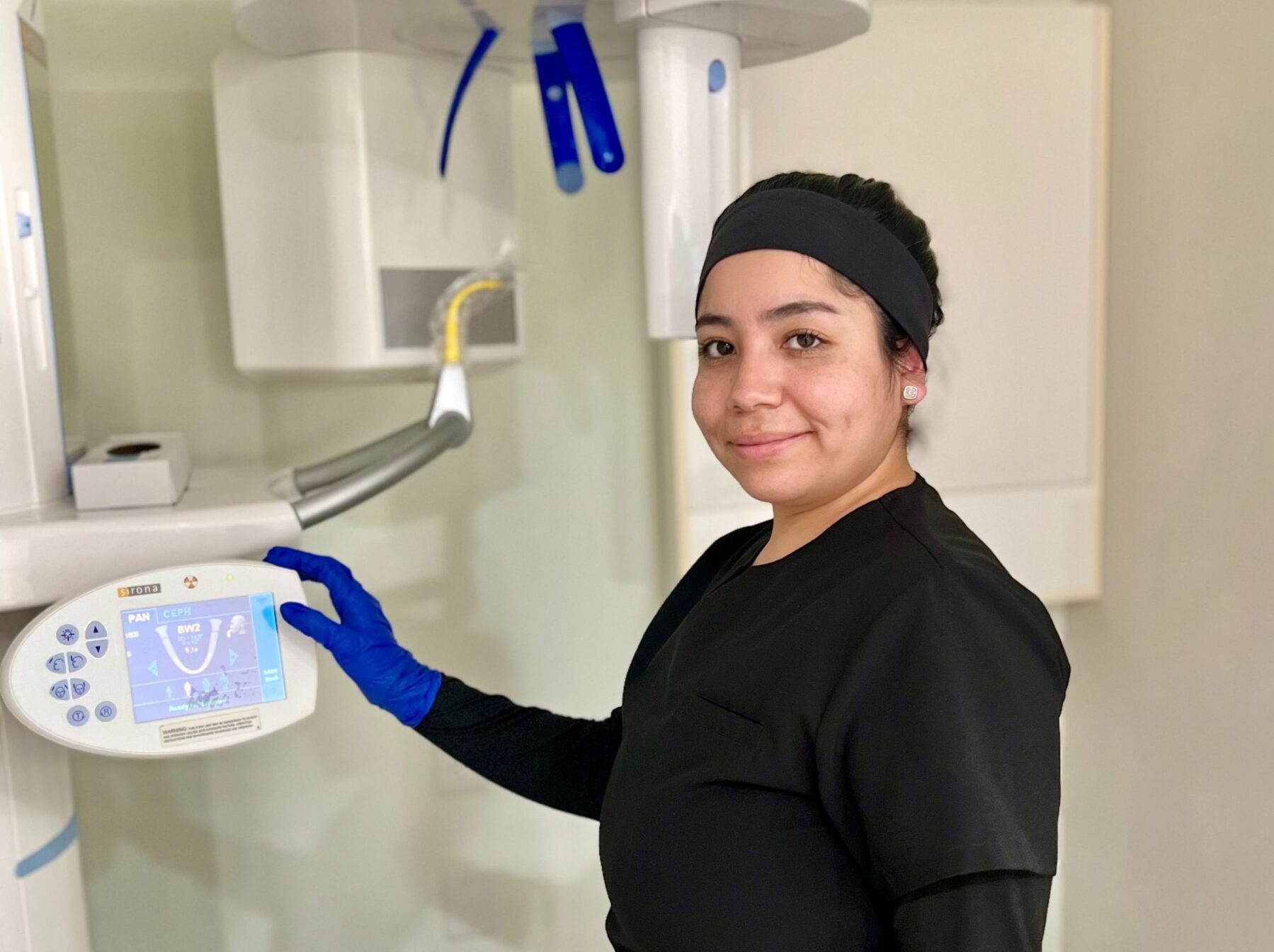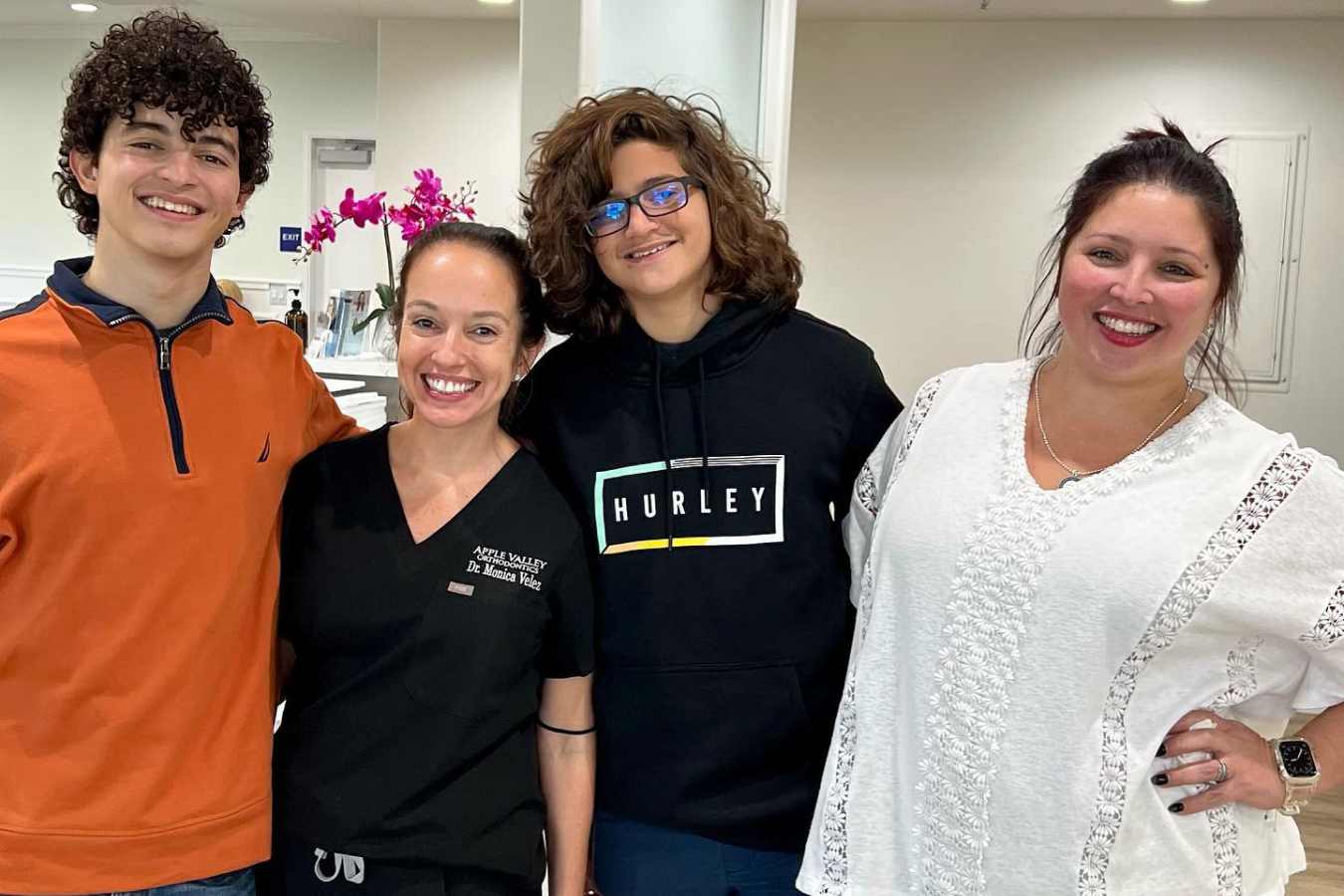Two-Phase Treatment
As a parent, you want to ensure the best possible outcome for your child’s oral health. That’s why it’s important to understand the benefits of early orthodontic treatment — also known as Two-Phase Orthodontics.
Many parents wait until their child has all of their permanent teeth before considering orthodontic treatment. However, this is not always the best approach. By waiting until all the permanent teeth have erupted, there may be missed opportunities to correct issues that could have been easily addressed at a younger age.
The American Association of Orthodontists recommends children see an orthodontist for an initial evaluation by the age of 7. This allows orthodontists to identify any potential issues and create a treatment plan that can be implemented at the appropriate time.
One of the major benefits of early treatment is preventing more serious problems from developing later on. By addressing orthodontic issues at a young age, you can avoid the need for more extensive and invasive treatment in the future. This can save time, money, and unnecessary discomfort down the road.
Early treatment can also help with improving facial symmetry and jaw alignment. By guiding the growth of your child’s jaw at a younger age, their teeth will have ample space to come in properly, resulting in a straighter and healthier smile.
Another advantage of early treatment is it can help correct harmful oral habits that may be affecting your child’s oral health. These habits, such as thumb sucking or tongue thrusting, can cause misalignment and other issues if not addressed early on.

Phase 1 & Full Treatment
The first phase of orthodontic treatment, also known as Phase 1, typically begins around the age of 7 or 8. This phase focuses on correcting any bite and jaw alignment issues, as well as creating space for permanent teeth to come in properly.
Phase 1 treatment usually involves using appliances such as braces or expanders to guide the growth and development of your child’s teeth and jaws. The duration of this phase can vary depending on the specific needs and progress of your child’s treatment.
Once Phase 1 is complete, a resting period will follow to allow permanent teeth to continue coming in. This may involve wearing a retainer or other appliances as recommended by the orthodontist. After this resting period, Phase 2 — or full orthodontic treatment — begins.
Full treatment typically involves straightening and aligning all of your child’s permanent teeth to create a beautiful and functional smile. This phase may involve the use of braces, aligners, or other appliances depending on your child’s specific needs.
In conclusion, early treatment through Two-Phase Orthodontics can provide numerous benefits for your child’s oral health. By starting treatment at the recommended age of 7 and addressing any potential issues early on, you can help your child achieve a straighter and healthier smile for life.
Spacers
Spacers, also known as orthodontic separators, play a crucial role in preparing your child’s mouth for Phase 1 of a two-phase orthodontic treatment. These small rubber doughnut-shaped devices are placed between your child’s molars to create space for orthodontic bands, a key component of braces and expanders.
The use of spacers typically takes place before the installation of braces or expanders, as these orthodontic bands need to fit snugly around the molars to exert the right amount of pressure. Without the adequate space created by spacers, the bands may not fit correctly, compromising the effectiveness of the treatment.
The placement of spacers is a temporary measure, usually lasting a few days to a week. During this period, your child may experience a sensation similar to having food stuck between their teeth, but any discomfort should be minimal and temporary. Once the required space is created, the spacers are removed, and the orthodontic bands are fitted, marking the commencement of Phase 1 treatment.

Surgical Orthodontics
Surgical orthodontics is a specialty within the field of dentistry that focuses on correcting jaw misalignment and irregular facial proportions. This exceptional form of treatment combines orthodontic braces and surgical procedures to achieve a remarkable alignment of the teeth and jaws. At Apple Valley Orthodontics, under the expert care of Dr. Velez, we are committed to enhancing facial aesthetics, dental health, and overall function.
One of the unparalleled advantages of surgical orthodontics is the remarkable transformation it offers, surpassing what can be achieved by braces alone. Surgical orthodontic treatment in Apple Valley, CA can effectively address a wide range of concerns, including underdeveloped jaws, overcrowding, protruding teeth, and asymmetrical facial features. Moreover, this treatment can significantly reduce the risk of oral health problems associated with misaligned or improperly functioning teeth.
Surgical orthodontic treatments may involve reshaping the jawbone, repositioning the lower or upper jaw, or refining facial structures such as the chin or nose. Depending on the individual case, surgery can be combined with traditional braces over a period of time or performed as a single treatment. It is crucial to emphasize that surgical orthodontics necessitates careful observation and expertise, which you can find at Apple Valley Orthodontics under the dedicated care of Dr. Velez.

When Might Surgical Orthodontics Be Needed?
There are several instances when surgical orthodontics may be necessary. In some cases, the underlying issue causing misalignment or irregular facial proportions requires surgical correction. If you or your child is experiencing severe overcrowding that cannot be resolved with braces alone, surgical intervention can create the necessary space within the jaw. Furthermore, if a patient is facing difficulties in breathing or speaking due to jaw irregularities, corrective surgery may be essential.
Additional signs that indicate potential benefits from surgical orthodontics include:
- A severe underbite or overbite
- Jaw pain resulting from facial imbalance
- Challenges in chewing food due to jaw misalignment
- Inability to fully or comfortably close the mouth
If you or a family member is facing any of the above challenges, we encourage you to reach out to our team for a consultation with Dr. Velez about the unique advantages of surgical orthodontics!

Dentofacial Orthopedics
At Apple Valley Orthodontics, we believe that having a healthy and confident smile should not be limited to just straightening your teeth. That’s why we offer comprehensive orthodontic treatment, including dentofacial orthopedics.
Dentofacial orthopedics is the specialized branch of orthodontics that focuses on the guidance and development of facial structures, specifically the growth and alignment of the jaw bones. This is important because a well-aligned jaw not only enhances your appearance but also plays a crucial role in overall oral health.
Many people mistakenly believe that orthodontic treatment only involves moving teeth, but dentofacial orthopedics takes into account the entire facial structure. By addressing any discrepancies in jaw size or positioning, we can not only improve the aesthetic of your smile but also correct functional issues such as difficulty chewing or speaking.
At Apple Valley Orthodontics, our team of skilled orthodontists utilizes advanced technologies and techniques to precisely diagnose and treat dentofacial orthopedic issues. We work closely with our patients to create personalized treatment plans that address their unique needs and concerns.
Some common conditions that can be treated with dentofacial orthopedics include:
- Overbite or underbite
- Crossbite
- Open bite
- Facial asymmetry
- Crowded or spaced teeth
By addressing these issues at a young age, we can often prevent the need for more invasive treatments in the future. However, dentofacial orthopedics can also be effective for older patients who may have experienced changes in their facial structure due to injury or other factors.
It’s important to note that dentofacial orthopedic treatment is often combined with traditional braces or aligners for optimal results. At Apple Valley Orthodontics, we offer a variety of options, including metal braces, ceramic braces, and Invisalign clear aligners.
Mouthguards
Whether you are an athlete or someone who suffers from teeth grinding, you know the importance of protecting your teeth. At Apple Valley Orthodontics, we understand that your smile is precious and needs to be safeguarded at all times.
Mouthguards are essential for anyone who participates in sports, especially contact sports like football, hockey, and basketball. They provide protection against injuries to the teeth, lips, cheeks, and tongue. Without a mouthguard, a simple fall or blow to the face can result in serious damage to your teeth and overall oral health. Additionally, those who suffer from bruxism (teeth grinding) can greatly benefit from wearing a mouthguard to protect their teeth and prevent further damage.
While you can purchase over-the-counter mouthguards, they do not offer the same level of protection and comfort as custom mouthguards from Apple Valley Orthodontics. Our team will take precise scans of your mouth to create a perfectly fitting mouthguard that is customized for your specific needs. This ensures maximum protection and comfort, allowing you to focus on performing your best in sports or getting a good night’s sleep without worrying about damaging your teeth.

Retainers
Congratulations on reaching this milestone! You’ve bid farewell to your braces or aligners, and now you can flash a beautiful, straight smile that’s full of confidence. But, remember, your orthodontic journey isn’t quite over yet. To maintain that stunning smile and stabilize your results, you’ll need to wear a retainer. Retainers help manage any potential shifts in tooth position and are essential post-treatment to keep your teeth in their new alignment while the surrounding gums, bone, and muscle adapt to the changes we’ve made.
types of retainers
Essix retainers, also known as aligner-style retainers, provide a more aesthetic alternative to traditional wire retainers. They are made from clear plastic and look similar to Invisalign aligners. These retainers can cover the entire arch of your teeth or just from canine to canine, depending on your specific needs. They are molded from your newly aligned teeth, ensuring a perfect fit.
Removable retainers can be taken out during meals and for oral hygiene routines. However, removable retainers can easily be misplaced, so always remember to store yours in its case whenever you take it out to eat or brush.
Fixed retainers are another option, especially for those who might forget to wear a removable retainer regularly. They consist of a thin wire bonded behind your top and/or bottom teeth, remaining in place continuously. While they often stay in place for life, they typically are required for at least a year after treatment.
A fixed retainer is an excellent choice if you don’t want the responsibility of keeping track of it, or if you’d rather not worry about adhering to a specific daily wear schedule. Teeth with fixed retainers do require a bit more care to remove tartar build-up during flossing. Patients with fixed retainers will need to use floss threaders to guide dental floss through the small spaces between the retainer and the teeth.
Choosing the right retainer is a crucial part of maintaining your new smile. At Apple Valley Orthodontics, we’ll guide you in selecting the best type based on your individual needs, lifestyle, and the specifics of your orthodontic treatment. Our goal is to help you preserve your beautiful, confident smile for years to come.


